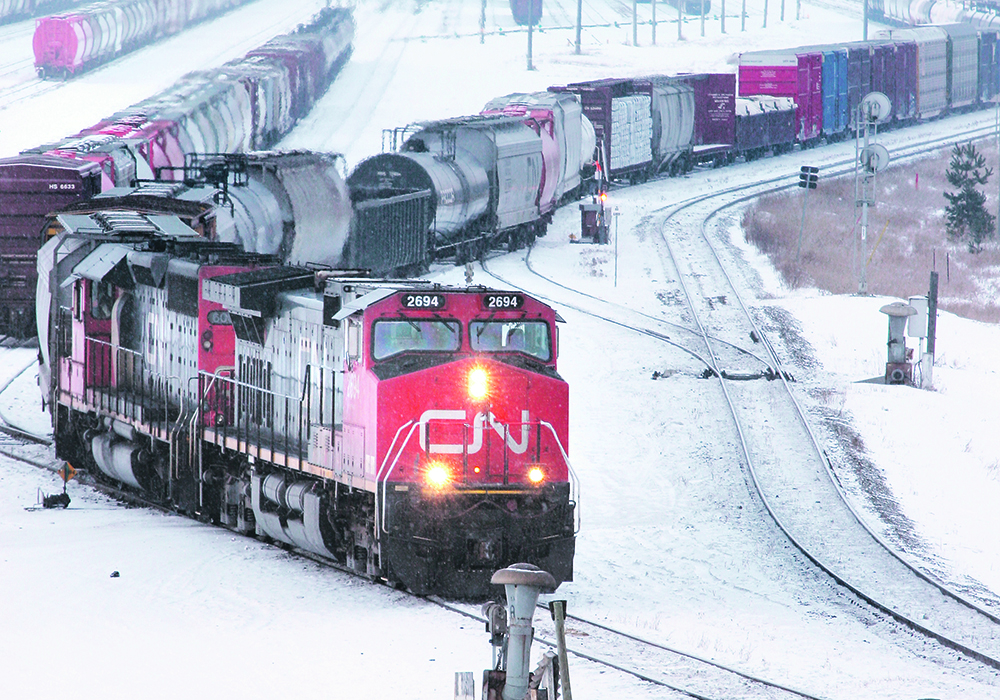Canada’s major railways have filed their winter contingency plans as required by law.
Since a new law was passed in 2018, Canada’s major rail companies are required to publish winter plans and can be forced to pay up if they fail to deliver on certain promises of rail cars.
That law came into effect after producer frustration over railways being unable to move products to market, often because poor weather resulted in lower handling capacity.
Last year, cold weather and other weather events, combined with protestors blocking rail lines and the early days of COVID-19, were considered challenging, but the major rail companies reported largely strong winter performances.
Read Also

New Alberta funding for program hopes to further unlock agritourism industry in province
Alberta Farm Fresh Producers Association is launching a new initiative thanks to $300,000 of provincial funding to bolster Alberta’s smaller scale family farms and agritourism sector.
In its 2020-21 contingency plan, Canadian Pacific Railway boasts of its capital investments in safety and a strategy to monitor weather conditions and adapt accordingly.
It also plans to increase the number of locomotives on heavier bulk trains, generally used for moving products like coal and potash, to better handle any additional moisture on the track.
“CP is installing new, smarter, switch snow melting equipment across its western corridor. These machines are designed with added sensory devices to allow for greater situational awareness at the track level,” read the report.
It also says it is “harnessing the power of predictive analytics to improve safety performance by reducing main line mechanical failures and improving our planning for train length during periods of extremely cold temperatures.”
Overall, the company says it is “well positioned” to move grain during the upcoming crop year. It plans to supply 5,850 grain hopper cars from August to mid-December and from April to July, depending on market demand.
During the winter shutdown of the Port of Thunder Bay, CP says it will supply 4,300 grain hopper cars each week.
It anticipates moving on average 1,050 cars of grain products each week in customer-supplied equipment through most of the upcoming crop year.
“We expect to move 31.4 million metric tonnes of grain and grain products during the 2020–2021 crop year. This target includes all Canadian grain and grain products moved by CP,” says the report. “While it’s still early, our customers indicate that they believe the upcoming year’s Western Canada grain production will be approximately 73 MMT or higher.”
Given about one quarter of all North American freight traffic flows through Chicago, the company is also urging customers to find other routing options that avoid the terminal if possible.
“On average, it takes a train 30 hours to travel through Chicago, which is about the same time it takes the same train to travel from Chicago to the East Coast. In this constrained environment, surges in freight volumes, severe weather and other adverse events can quickly cascade into a significant disruption throughout the network,” the report says. “That disruption can affect the movement of grain, other commodities and the broader economy as a whole.”
The company is continuing to buy up more high-capacity grain hopper cars, too. In 2018, it announced plans to spend about $500 million to do so and, according to its winter report, grain customers will see more than 3,300 new cars in service this year.
“Within reason, CP is well-positioned to accommodate unexpected surges in volumes caused by challenges experienced by other rail carriers, non-rail components in the supply chain or adverse weather,” the report says.
Canadian National Railway also highlighted capital investments made to better weather the winter. It added 260 new locomotives and 1,000 new hopper cars. It boasts of preparing snow-clearing equipment and weather forecasting as some of the ways it is planning to mitigate brutal winter conditions.
But it points to new restrictions on rail speed as a barrier to meet customer demand.
Company president J.J. Ruest writes in the report that those changes — made by a ministerial order in April as a means of keeping railways safe —have created “deep concerns that the order has unintended consequences that will hamper our ability to use our network and equipment attributes this winter to the full benefit of our customers and supply chain partners.”
















